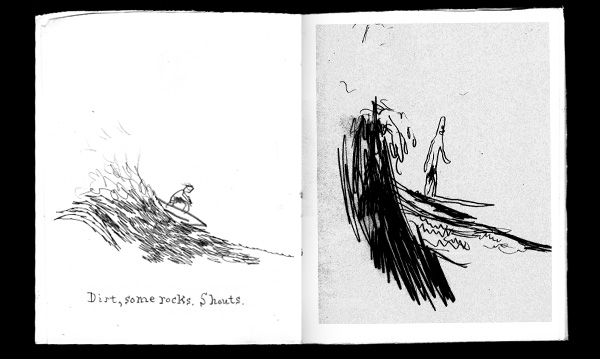
J.T. Kirkland, All at Sea, Poplar and Holes, 30" x 48.5", 2004
This coming Monday, May 2, J.T. Kirkland of Thinking About Art is opening his first solo show. I visited his studio a few weeks ago and was impressed by the great stuff he has to show. Details from the press release:
Debut Solo Exhibition Examines “Organic Minimalism”
What: “Studies in Organic Minimalism” – J.T. Kirkland solo art exhibition
Who: Presented by the League of Reston Artists
and the University of Phoenix Northern Virginia Campus
When: May 2 – June 25, 2005
Special Reception for the artist: Friday, May 13, 2005 – 6:00 – 9:00pm
Where: University of Phoenix Northern Virginia Campus
11730 Plaza America Drive, Suite 200
Reston, Virginia
For directions, see the LRA's web site at http://www.leagueofrestonartists.org
Viewing: Exhibition is free and open to the public during regular business hours
Monday – Thursday 9:00am – 10:00pm
Friday 9:00am – 5:00pm
Saturday 9:00am – 1:00pm
Description: "Studies in Organic Minimalism" will consist of approximately 20 pieces that are emblematic of J.T. Kirkland’s most recent body of work. In this show, Kirkland sets up a dialogue of contradictions; what does the viewer think about art vs. craft, random vs. determined, nature vs. technology, want vs. need? The size, orientation and painterly qualities of the chosen wood reference traditional painting. The material and use of various power tools (drill, belt sander, jig saw, drum sanders, table saw, etc) reference traditional sculptural techniques. The use of implied lines built from closely located holes reference traditional drawing. In sum, Kirkland’s “Organic Minimalism” is about the possibility of being many different things at once, while technically being nothing more than wood with holes drilled in it.
J.T. Kirkland, Lifecycle, Poplar and Holes, 35" x 36", 2004
The holes in Kirkland’s work operate on many different levels. For example, the use of hand-drilled holes recalls the artist’s touch in the same way that a strong graphite line illustrates the confident touch of a draftsman. Additionally, the holes serve as a direct metaphor for the chosen material. Wood grain is fascinating in that it is the material. It moves through the wood and changes at each level. The hole is an unsubtle allusion to the depth of the wood. Just as the grain moves through the wood so do the holes. Lastly, the process of designing the hole pattern or shape is intuitive. Once Kirkland has determined the orientation of the wood panels, he intuitively configures a hole pattern or shape – sometimes geometric and other times gestural – that either works directly with the grain pattern or works directly opposed to the grain pattern. As finished pieces, each of Kirkland’s creations challenge the viewer to see wood grain and holes as equals. When these two elements are successfully balanced, the viewer will inevitably be confronted with the questions proposed above (art vs. craft, random vs. determined, nature vs. technology, want vs. need, etc). The inherent beauty of the work and the provocation of thought about contradictions is the goal of Kirkland’s work and the measure of his success.
Artist: J.T. Kirkland is a 26-year-old artist making his solo debut in the Washington, D.C., metro area. A high-tech consultant by day, Kirkland pursues art making and writing with enthusiastic rigor at any available opportunity. Through his Web site, Thinking About Art, Kirkland has become an integral part of the art community in this region by drawing attention to and prompting discussion about area artists and their work.
Ironically, for most of his life Kirkland had distaste for art. Born and raised in central Kentucky, there was never much of a focus on artistic pursuits and appreciation, and Kirkland has always been forthcoming on his naïve stance that art was a waste of time. However, a semester abroad in France and visit to the Musee d’Orsay, opened his eyes and made Kirkland realize he had to make art. It all made sense to him at that point.
Primarily self taught, Kirkland has focused his attention on experimenting and exploring various art techniques, mediums and inspirations. Influenced strongly by Minimalism and woodworking, Kirkland’s work has naturally evolved to what it has become today.


















































